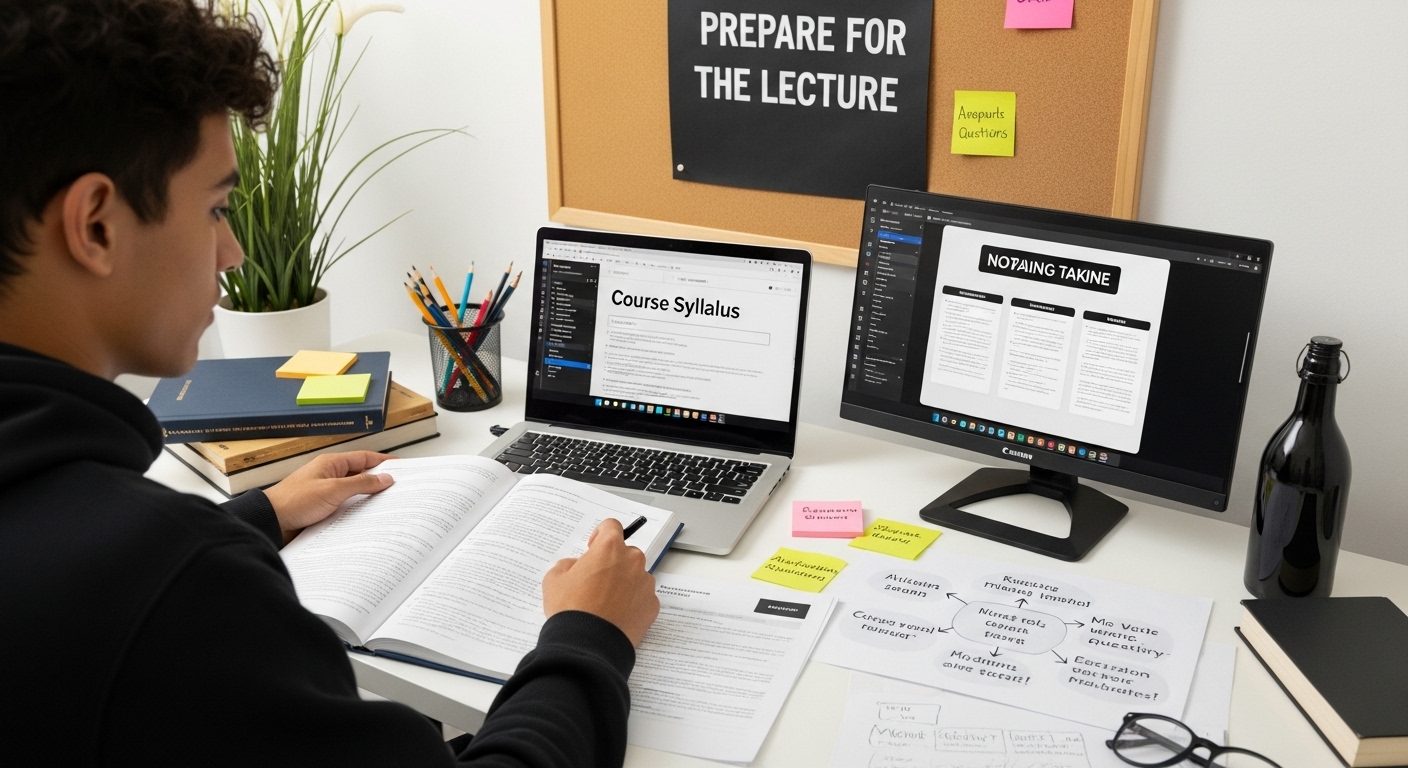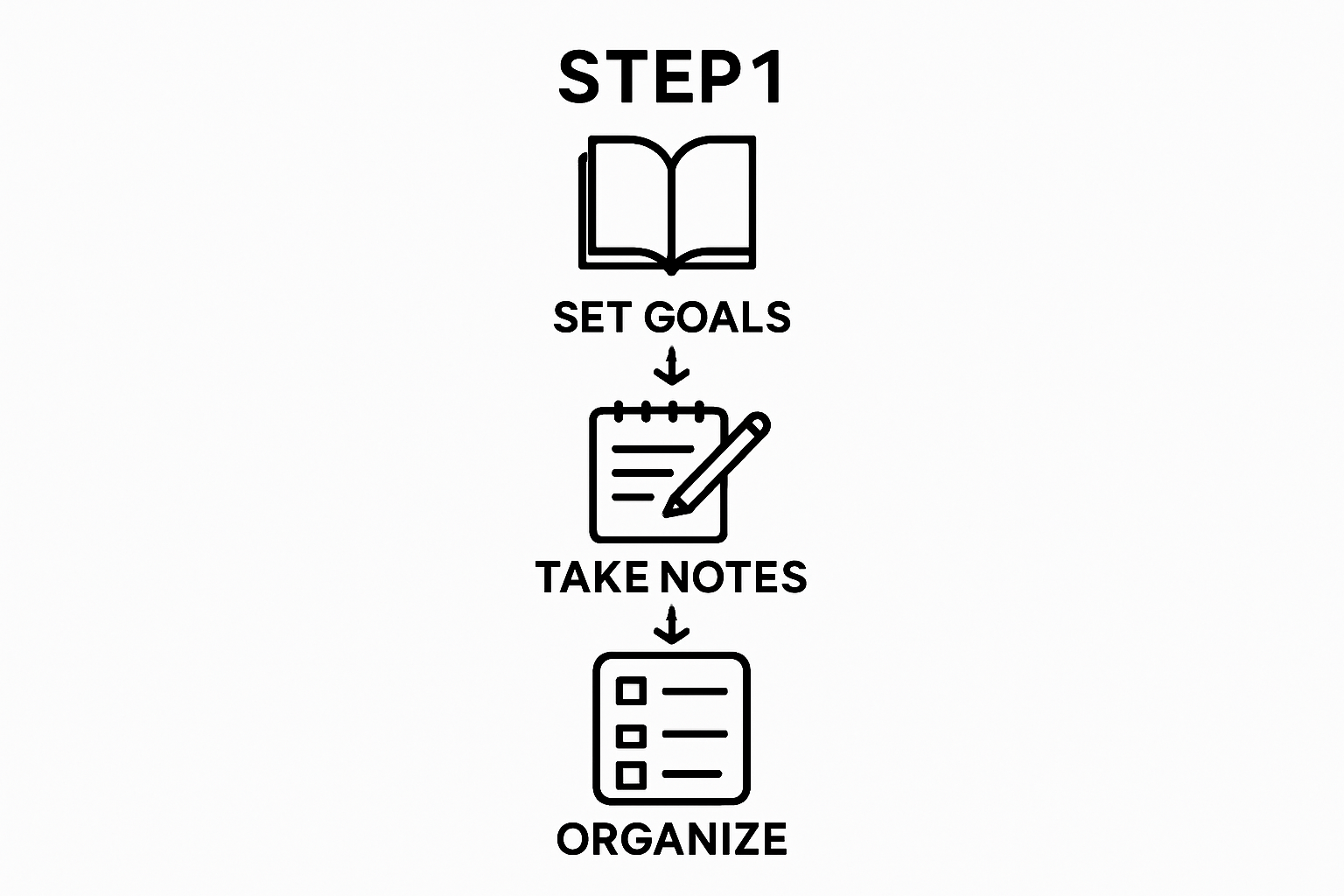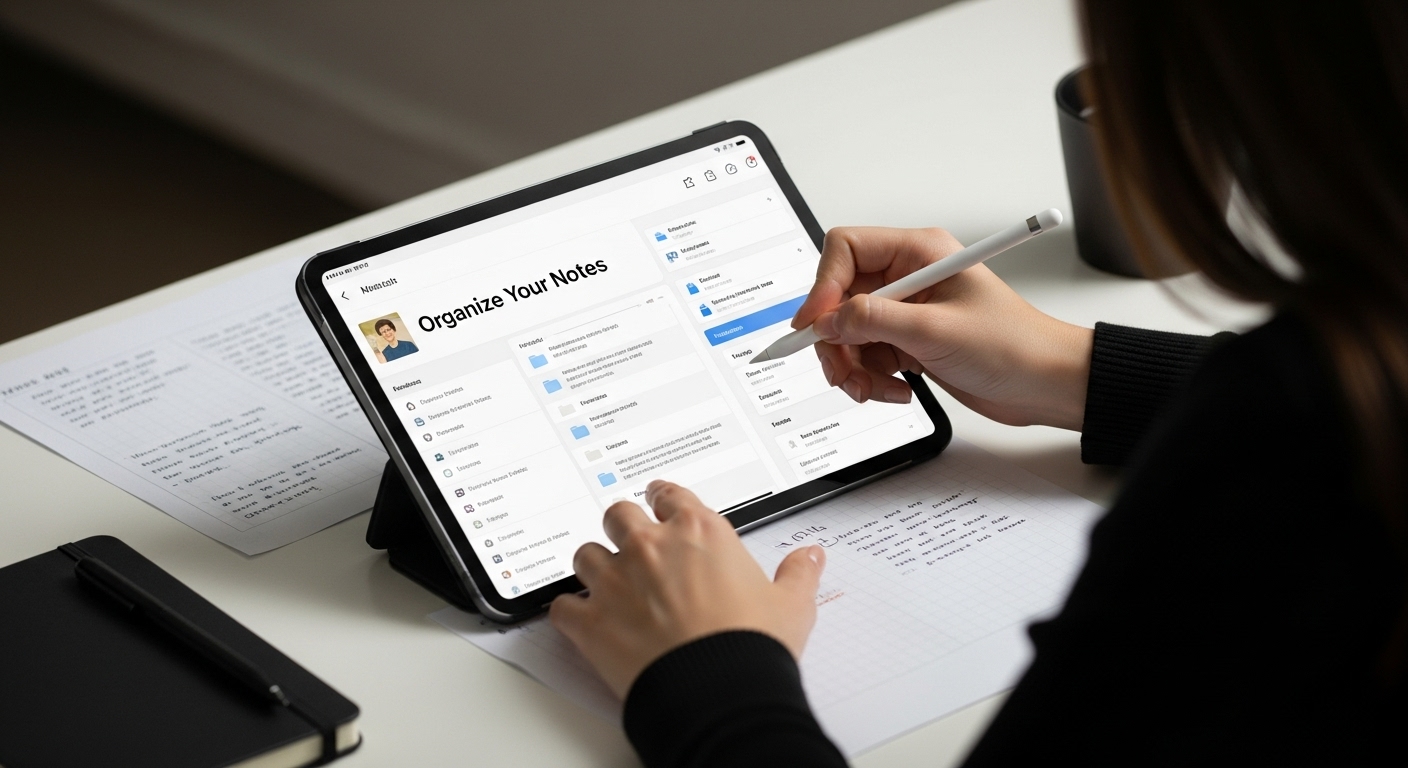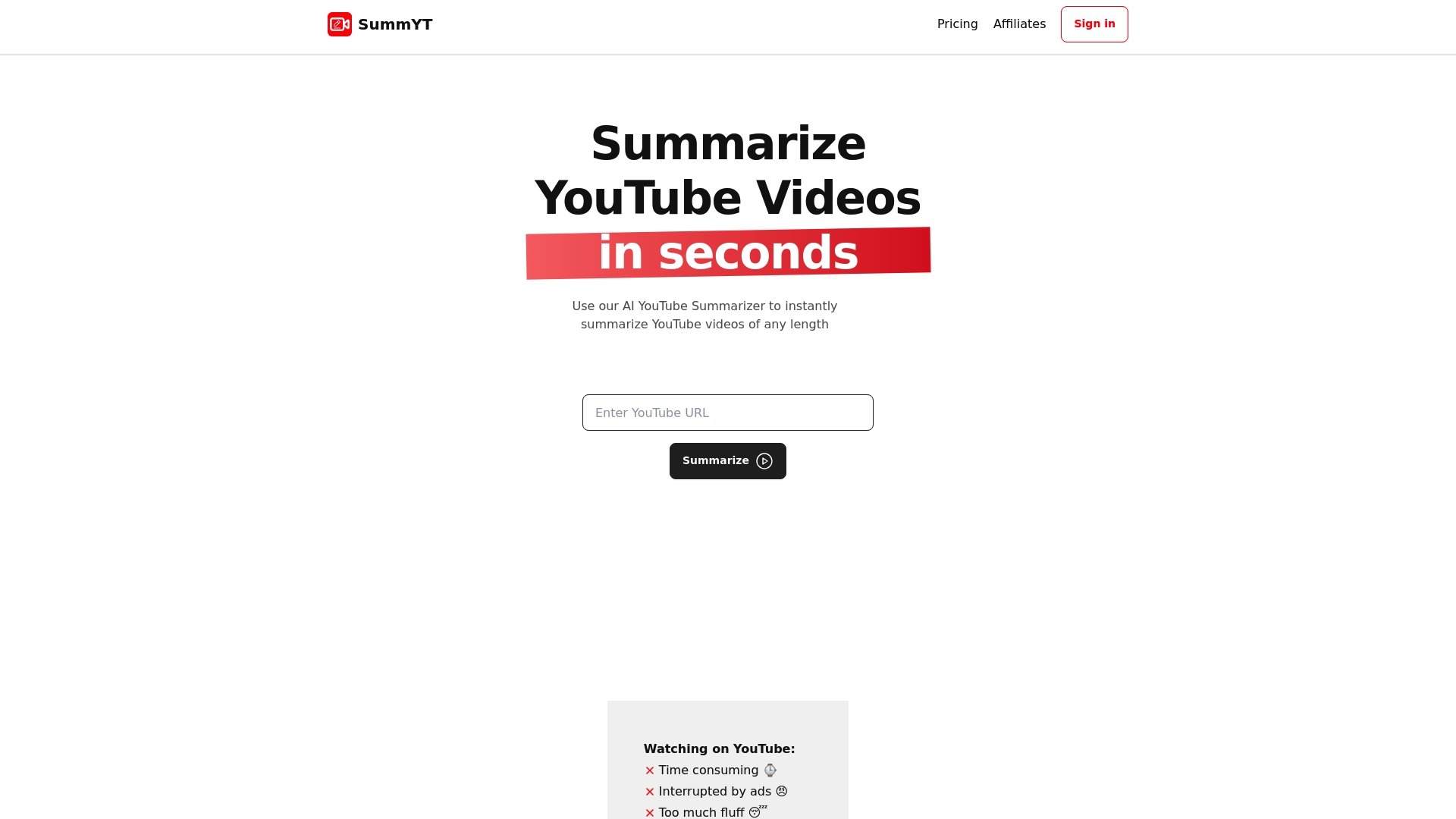How to Summarize Lectures Effectively for Better Learning

Most students walk into lectures hoping their notes will magically turn into study gold. But research shows that without a clear strategy, up to 60 percent of important lecture content goes unrecorded or misunderstood. Sounds shocking, right? The real surprise is that effective summarization has very little to do with how fast you take notes or even how much you write. With the right preparation and a few active learning techniques, you can turn every lecture into a custom study guide that does the hard work for you.
Table of Contents
- Step 1: Prepare For The Lecture By Setting Goals
- Step 2: Actively Take Notes During The Lecture
- Step 3: Organize Your Notes For Clarity
- Step 4: Summarize Key Points And Main Ideas
- Step 5: Review And Revise Your Summary For Accuracy
Quick Summary
| Key Point | Explanation |
|---|---|
| 1. Set Clear Learning Goals | Review course materials to anticipate key themes and formulate specific questions for the lecture. |
| 2. Utilize Effective Note-Taking Techniques | Employ structured methods like the Cornell method to capture main ideas and supporting details efficiently. |
| 3. Organize Notes for Clarity | After the lecture, refine your notes with visual elements like color-coding to enhance understanding and recall. |
| 4. Summarize Key Points Concisely | Create a compact summary that captures the core lecture concepts, using your own language for clarity. |
| 5. Review for Accuracy and Clarity | After drafting, verify your summary’s content for factual accuracy and logical coherence to ensure comprehension. |
Step 1: Prepare for the Lecture by Setting Goals
Effective lecture summarization begins long before the instructor starts speaking. Preparation sets the foundation for capturing the most valuable insights and understanding the core content. By establishing clear goals and creating a strategic approach, students can transform passive listening into active learning.
Understanding Your Learning Objectives
Before attending any lecture, take time to review the course syllabus, previous class materials, or any assigned readings. This preliminary research helps you anticipate the lecture’s key themes and conceptual frameworks. Consider what specific knowledge you want to extract. Are you seeking comprehensive understanding, preparing for an upcoming exam, or looking to grasp specific technical concepts?
Develop a preliminary mental map of expected topics. Identify gaps in your current understanding and frame specific questions you want answered during the lecture. This proactive approach shifts your mindset from passive recipient to engaged learner. By creating a personalized learning roadmap, you increase your ability to recognize and capture critical information.
Preparing Your Documentation Strategy
Choose a documentation method that aligns with your learning style and the lecture’s format. While some students prefer traditional handwritten notes, others might opt for digital tools like note-taking apps or specialized software. The key is selecting a system that allows quick, flexible capture of information.
Here is a comparison of popular note-taking methods and tools to help you choose the approach that fits your learning style and lecture format best.
| Method/Tool | Format | Key Features | Best For |
|---|---|---|---|
| Handwritten Notes | Paper | Flexible layout, promotes retention | Learners who benefit from writing |
| Cornell Method | Paper/Digital | Divided sections for cues, notes, and summary | Structured summary and review |
| Notion | Digital | Custom templates, color-coding, easy organization | Pre-lecture preparation, review |
| Evernote | Digital | Voice recording, searchable, cloud sync | Multimedia lectures, fast capture |
| OneNote | Digital | Flexible structure, tagging, drawing tools | Visual learners, digital filing |
Consider preparing a structured template before the lecture. This might include designated sections for main concepts, supporting evidence, questions, and personal reflections. A well-designed template guides your note-taking and ensures you capture information systematically. For digital note-takers, apps like Notion offer customizable templates that can streamline your preparation process.
Your documentation strategy should balance comprehensiveness with selectivity. You cannot and should not attempt to transcribe every single word. Instead, focus on capturing core concepts, unique insights, and information that goes beyond readily available textbook material. This approach transforms note-taking from a mechanical task to an active learning process that enhances comprehension and retention.

By investing time in preparation and setting clear learning goals, you create a strong foundation for effective lecture summarization. Remember, the most successful learners approach each session with intentionality, curiosity, and a strategic mindset.
Step 2: Actively Take Notes During the Lecture
Active note-taking transforms lectures from passive information delivery into an engaging learning experience. The goal is not simply to record words, but to capture knowledge strategically and efficiently. Successful note-taking requires a dynamic approach that balances listening, comprehension, and selective documentation.
Creating a Real-Time Knowledge Capture System
During the lecture, your primary objective is to create a personalized knowledge map that reflects the instructor’s key concepts and your unique understanding. Begin by staying mentally engaged. This means listening critically, identifying main ideas, and recognizing the logical progression of information. Avoid the temptation to transcribe every single word, which can actually detract from comprehension.
Develop a shorthand system that allows rapid notation. Use abbreviations, symbols, and quick graphical representations to capture complex ideas quickly. For instance, an arrow might represent causation, while a star could highlight critically important points. Your notation method should be intuitive and consistent, enabling you to decode your notes easily later.
Strategic Note-Taking Techniques
Adopt a structured approach to capturing information. The Cornell method, recommended by learning researchers at Cornell University, provides an excellent framework. Divide your page into three sections: a narrow left column for key questions or cues, a wider right column for detailed notes, and a bottom section for summarizing main points after the lecture.
Pay special attention to verbal and non-verbal cues that signal important information. Instructors often telegraph key concepts through tone changes, repeated phrases, or explicit statements like “this is crucial” or “remember this point”. These signals are your signposts for critical information that deserves careful documentation.
Digital note-takers can leverage technology to enhance their capture process. Apps like Evernote or OneNote offer features such as voice recording, searchable text, and cloud synchronization. However, be cautious not to let technological tools distract you from active listening. The technology should complement, not replace, your cognitive engagement.
Remember that effective note-taking is an active learning process. You are not a passive recorder but an intellectual interpreter of information. Your notes should reflect your understanding, questions, and personal connections to the material.
By the lecture’s end, your notes should serve as a personalized knowledge artifact that captures not just information, but your unique intellectual journey through the content.
Step 3: Organize Your Notes for Clarity
Transforming raw lecture notes into a structured, comprehensible resource requires intentional organization. This step bridges the gap between information collection and meaningful understanding, turning scattered observations into a coherent knowledge framework.
Developing a Systematic Review Process
Immediately after the lecture, allocate dedicated time to review and refine your notes. The first hour after a lecture is critical for memory consolidation and information retention. Start by reading through your initial notes, adding clarity, connecting related concepts, and filling in any gaps while the information is still fresh in your mind.
Create a visual hierarchy within your notes. Use different formatting techniques to distinguish between main ideas, supporting details, and personal insights. Bold key concepts, underline critical definitions, and use different colored annotations to categorize information. This visual stratification helps your brain quickly recognize and process complex information.
Implement a color-coding system that makes sense to you. For instance, use blue for core concepts, green for examples, and red for areas requiring further research or clarification. This approach transforms your notes from a linear transcript into an interactive learning tool. Your goal is to create a personal knowledge map that reflects not just what was said, but how different ideas interconnect.
Consider exploring additional strategies for effective lecture summarization that can enhance your organizational approach. Different disciplines and learning styles might require unique adaptation of these techniques.
Digital tools can significantly enhance your note organization process. Applications like Notion, Evernote, and Microsoft OneNote offer flexible templates and organizational features that allow dynamic note restructuring. These platforms enable you to create nested sections, add tags, and even link related concepts across different documents.
The ultimate test of your organization is simple: Can you understand your notes clearly a week after the lecture? If you can quickly grasp the main concepts, recreate the lecture’s logical flow, and identify key takeaways, you have successfully organized your notes. Remember, effective note organization is not about perfection but about creating a personalized system that supports your unique learning process.
By investing time in systematic review and thoughtful organization, you transform raw notes into a powerful learning resource that serves you well beyond the immediate lecture context.
The following table summarizes each main step for effective lecture summarization, with an overview of the goal and important actions for each stage.
| Step | Main Goal | Key Actions |
|---|---|---|
| Prepare for the Lecture | Set clear objectives and design your strategy | Review readings, form questions, set up template |
| Actively Take Notes During the Lecture | Capture main ideas efficiently and accurately | Use structure, shorthand, focus on connections |
| Organize Notes for Clarity | Enhance readability and deepen understanding | Color-coding, visual hierarchy, refine notes |
| Summarize Key Points and Main Ideas | Distill core concepts into concise summaries | Identify thesis, use your own words, outline |
| Review and Revise Your Summary for Accuracy | Ensure factual completeness and clarity | Take a break, fact-check, edit for coherence |

Step 4: Summarize Key Points and Main Ideas
Summarization is the critical bridge between raw information and deep understanding. This step transforms your detailed notes into a concise, powerful representation of the lecture’s core content. The art of summarization requires both analytical thinking and strategic information distillation.
Crafting a Structured Summary Approach
Begin your summarization process by identifying the lecture’s central thesis or primary objective. Review your organized notes and extract the fundamental concepts that form the lecture’s backbone. Look for recurring themes, key arguments, and pivotal explanations that provide the intellectual framework of the discussion.
Develop a summary that follows a clear logical structure. Start with a concise overview that captures the lecture’s main purpose, then progressively break down the key points. Each main point should be accompanied by 1-2 supporting details that provide context and depth. The goal is to create a compact yet comprehensive representation that can standalone as a meaningful record of the lecture.
Limit your summary to approximately 10-20% of your original notes. This compression forces you to be selective and prioritize the most significant information. Focus on capturing ideas, not transcribing text. Use your own language to demonstrate comprehension, transforming the summary from a mere record to an active learning tool.
Learn advanced techniques for creating clear and concise video report outlines that can further enhance your summarization skills. Different contexts might require nuanced approaches to information synthesis.
Consider creating multiple summary formats to reinforce your understanding. Experiment with techniques like mind mapping, which visually represents conceptual relationships, or create a bullet-point list that hierarchically presents information. Some learners find success in drafting a summary as if explaining the lecture to a friend, which naturally promotes clarity and simplification.
The ultimate test of an effective summary is its ability to communicate the lecture’s essence to someone who was not present. Ask yourself: Could another person understand the key concepts and their significance by reading your summary? If the answer is yes, you have successfully transformed complex information into an accessible, meaningful document.
Remember that summarization is a skill that improves with practice. Each lecture presents an opportunity to refine your ability to distill complex ideas into clear, impactful insights. Embrace this process as an essential component of active learning and intellectual growth.
Step 5: Review and Revise Your Summary for Accuracy
Reviewing and refining your lecture summary is the crucial final stage that transforms raw notes into a reliable, comprehensive learning resource. This step ensures the accuracy, clarity, and intellectual integrity of your summarized content, turning potential misunderstandings into precise knowledge representation.
Developing a Critical Review Methodology
Begin your revision process by creating temporal distance from your initial summary. Wait at least a few hours, or ideally a day, before reviewing your notes. This mental break allows you to approach the material with fresh perspective and increased objectivity. During this review, you become both the creator and the critical evaluator of your own learning artifact.
Cross reference your summary against multiple sources to verify accuracy. Return to your original lecture notes, course materials, and recommended readings. Look for potential discrepancies or areas where your initial understanding might have been incomplete or slightly misaligned. Learn advanced techniques for refining webinar and lecture summaries that can help enhance your review process.
Employ a systematic approach to verification. According to academic writing guidelines, your revision should focus on three critical dimensions: factual accuracy, conceptual clarity, and logical coherence. Check each main point to confirm it genuinely reflects the lecturer’s intended message. Pay special attention to technical terms, statistical data, and complex theoretical frameworks that require precision.
Refining Language and Structural Integrity
During revision, prioritize clarity and concision. Eliminate unnecessary words, redundant phrases, and overly complex language. Your summary should communicate ideas efficiently, using precise terminology that demonstrates genuine comprehension. Replace vague statements with specific, actionable insights that capture the essence of the lecture.
Consider reading your summary aloud. This technique helps identify awkward phrasings, grammatical inconsistencies, and areas where the logical flow might be interrupted. If something sounds confusing when spoken, it likely needs further refinement. Imagine explaining these concepts to a peer who was absent from the lecture.
The ultimate verification of your summary’s effectiveness is its ability to serve as a comprehensive yet compact reference. Ask yourself critical questions: Would this summary help you reconstruct the lecture’s key arguments? Does it capture the nuanced insights beyond basic facts? Can another student understand the core concepts from this document?
Remember that summary revision is an iterative process. Each review strengthens your understanding, improves your analytical skills, and transforms note-taking from a passive recording activity into an active, engaged learning strategy.
Cut Your Lecture Review Time by Over 80% with AI-Powered Summaries
Are you tired of spending hours preparing, taking, and rewriting lecture notes just to keep up? If you recognize the struggle of organizing mountains of information and turning detailed notes into clear, concise summaries, you are not alone. Many learners find it difficult to consistently capture, review, and distill key insights from complex lectures. The pain of information overload, missed details, and wasted time is real.

Reclaim your study hours and boost your productivity with SummYT. Our AI-powered summarizer automatically extracts the main ideas, supporting details, and essential questions from any YouTube lecture, webinar, or educational video. SummYT transforms long videos into structured summaries so you get all the benefits of active learning and strategic note-taking without the time drain. Start summarizing your next video today at SummYT’s main page and see how much faster and smarter your learning process can be. Try it now before your next lecture recap takes up another whole evening.
Frequently Asked Questions
How can I prepare for a lecture to summarize effectively?
To prepare for a lecture, review course materials and identify your learning objectives. Consider what key concepts you want to learn and develop a mental roadmap of expected topics. This proactive approach enhances your engagement during the lecture.
What note-taking strategies should I use during the lecture?
Use an active note-taking approach that involves creating a real-time knowledge capture system. Consider methods like shorthand, the Cornell method, or digital tools. Focus on capturing main ideas and their connections, rather than transcribing everything verbatim.
How should I organize my notes after the lecture?
Immediately after the lecture, dedicate time to review and refine your notes. Employ various formatting techniques like bolding key concepts and using color-coding to create a visual hierarchy within your notes. This organization should make it easy to identify main ideas and supporting details.
What are the best techniques for summarizing lecture notes?
For summarizing lecture notes, start by identifying the central thesis and create a structured summary that highlights key points and supporting details. Limit your summary to 10-20% of your notes, using your own language. Methods like mind mapping or bullet-point lists can help reinforce understanding.



